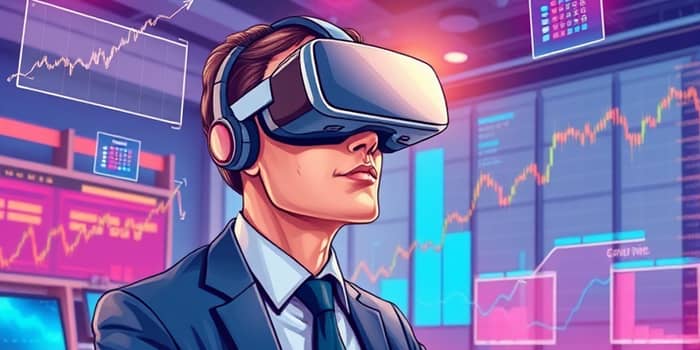
The finance industry is on the cusp of a revolution as virtual reality (VR) and extended reality (XR) reshape how professionals analyze data, interact with clients, and make strategic decisions. These immersive technologies promise to transform abstract numbers into engaging experiences, creating a new frontier for investment insight and financial services.
Extended reality, encompassing VR, augmented reality (AR), and mixed reality (MR), is more than just a buzzword. It represents a fundamental shift in how financial services operate. Institutions worldwide are exploring strategic investments in digital transformation to engage customers and streamline workflows.
By 2025, XR is projected to be a top fintech trend, offering both consumer-facing and enterprise solutions that unlock deeper understanding of market dynamics and risk profiles.
Traditional two-dimensional dashboards can limit perspective. VR environments allow analysts to step inside their data, viewing complex datasets in three dimensions. With dynamic 3D visualization of complex data sets, market patterns, correlations, and anomalies become immediately clear.
Users can manipulate data points, filter scenarios, and animate projections. Scenario simulations in VR enable rapid stress testing of portfolios under different market conditions, offering real-time insight into potential risk exposure and reward trade-offs.
Financial advisors are redefining client meetings by hosting virtual consultations in immersive environments. Clients explore interactive retirement scenarios, investment strategies, and portfolio allocations as if they were walking through a digital gallery of their future wealth.
Gamified simulations and educational modules make abstract concepts like compound interest and option pricing tangible. This approach not only enhances understanding but also builds confidence, fostering stronger advisor–client relationships.
Beyond customer-facing applications, VR is transforming back-office functions. Training modules in VR offer employees a safe, controlled space to practice fraud detection, compliance procedures, and high-stakes decision-making without real-world consequences.
These immersive training environments accelerate learning curves and ensure staff are prepared for complex challenges.
As financial institutions adopt immersive platforms, robust security measures are vital. Integrating VR with biometric authentication—such as gesture recognition and eye tracking—provides secure identity verification in virtual transactions.
Encrypted data streams and strict access controls ensure sensitive financial information remains protected. Regulatory bodies are beginning to develop guidelines for XR usage, mandating rigorous privacy and compliance protocols to safeguard client data.
Several leading organizations have launched pioneering XR initiatives:
These pilots demonstrate the potential of XR to drive engagement, efficiency, and customer satisfaction across diverse financial services.
The financial XR market is experiencing rapid growth as products move beyond proof-of-concept into mainstream adoption. Institutions are allocating significant budgets to immersive initiatives, anticipating substantial returns in operational efficiency and customer loyalty.
This surge aligns with broader forecasts predicting the global AR/VR market will exceed $100 billion annually within five years, with a significant slice dedicated to enterprise and financial applications.
Despite the promise, hurdles remain. High initial costs for hardware and custom software can be a barrier, particularly for smaller firms. Moreover, ensuring accessibility for diverse customer demographics requires intuitive interfaces and minimal operational friction.
Data privacy and security must be prioritized, as immersive platforms handle extensive personal and transactional information. Meeting regulatory requirements and obtaining clearances can add complexity to deployment timelines.
The intersection of AI and XR will define the next phase of financial innovation. Predictive analytics, delivered through immersive interfaces, will offer hyper-personalized advisory experiences, adjusting in real time to individual client goals, risk tolerance, and market shifts.
Blockchain integration promises transparent, tamper-proof records of virtual asset transactions, enhancing trust in emerging domains like cryptocurrency exchanges and tokenized investments.
We can also expect a proliferation of virtual-only banks, appealing to tech-savvy demographics with immersive onboarding processes and 24/7 global access to financial services.
Virtual reality is not a distant vision but a rapidly maturing tool that can revolutionize finance. By harnessing immersive data visualization, interactive customer experiences, and robust training simulations, institutions can unlock new levels of insight, efficiency, and client engagement.
As XR technologies continue to advance and costs decline, embracing these innovations will be key to staying competitive in a dynamic financial landscape. The era of immersive investment insights has arrived—are you ready to step inside?
References





